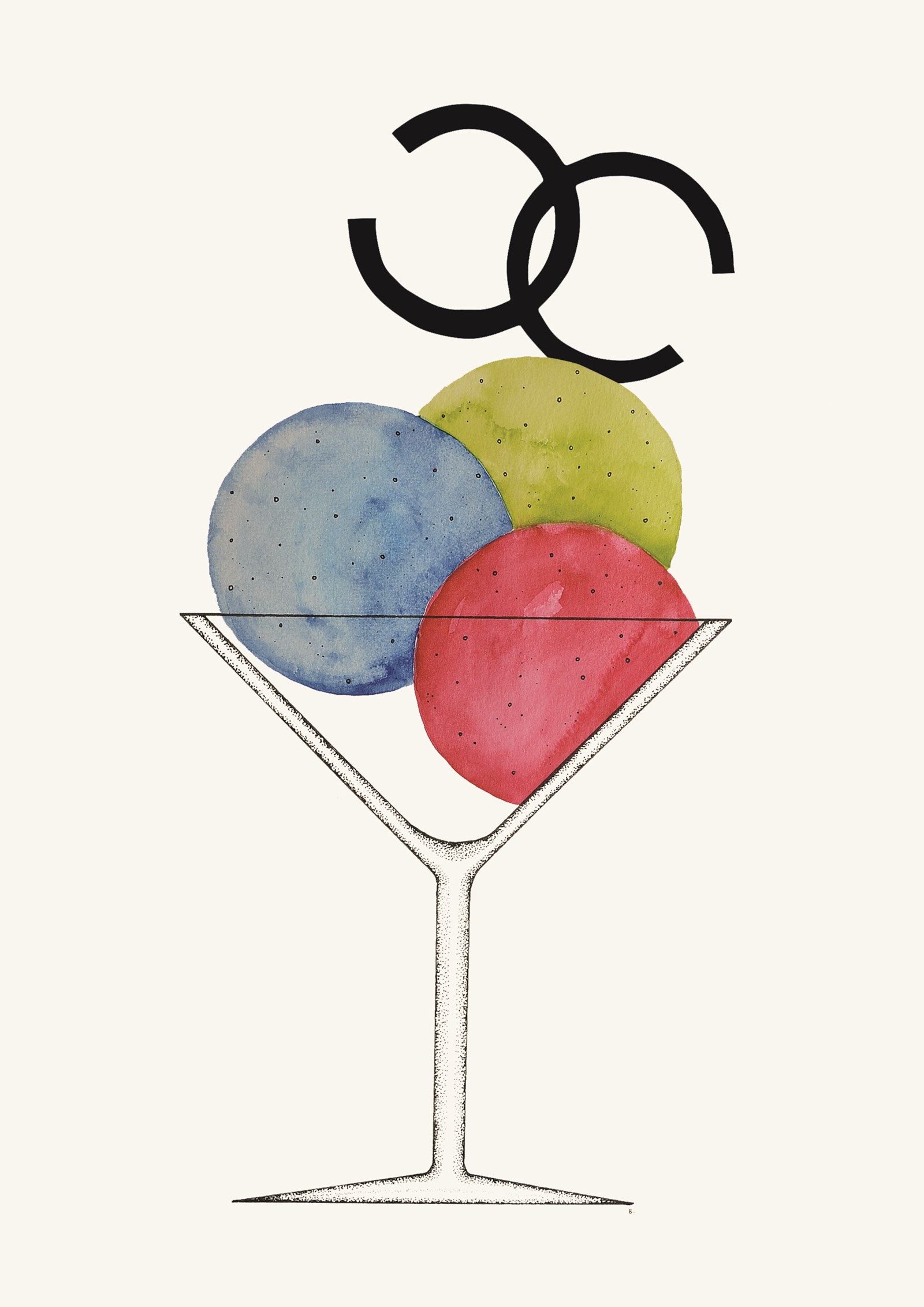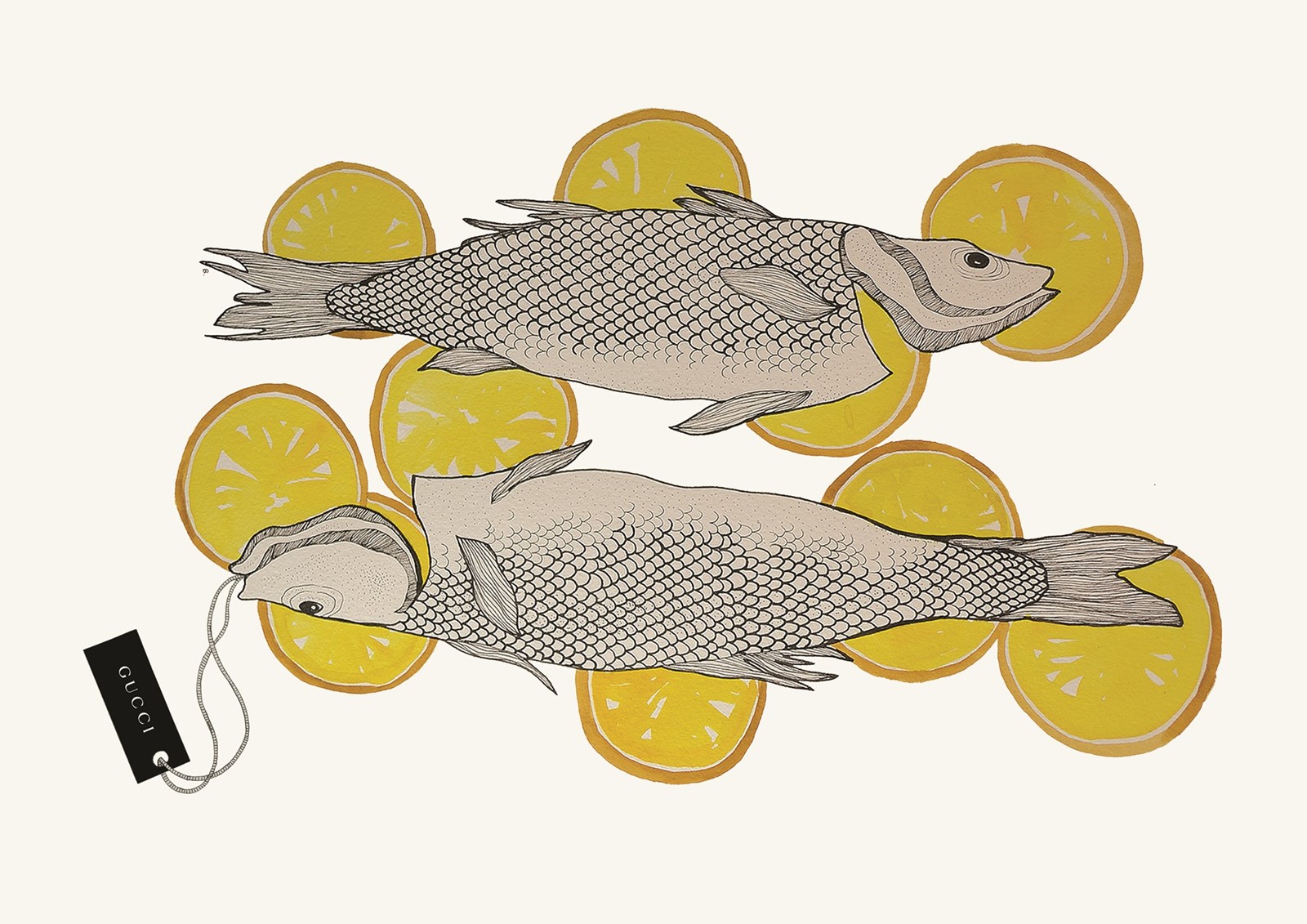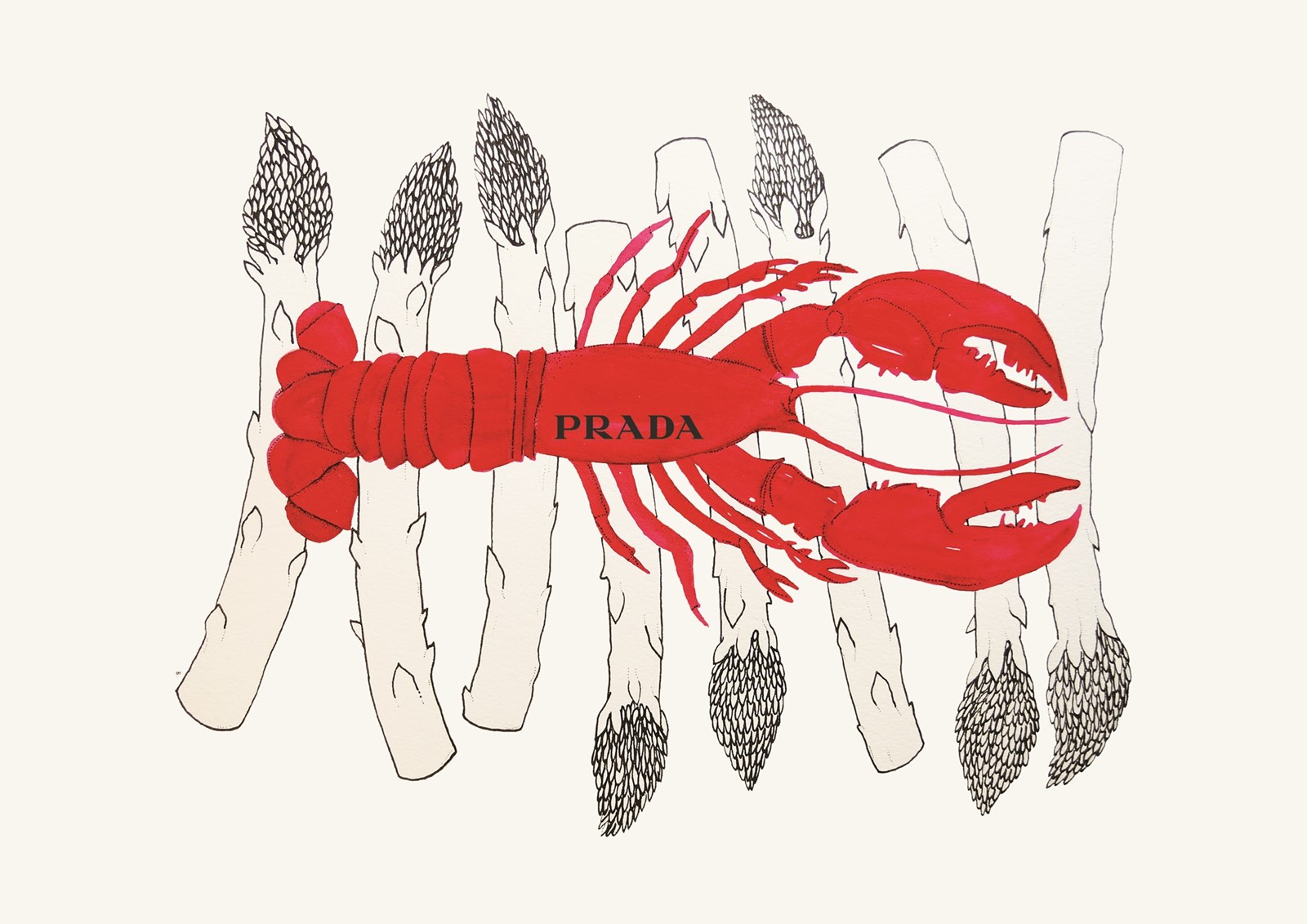Eating is an intimate act – in fact, eating in a restaurant is just about the most intimate way to pleasure the body that one is socially permitted to perform in public. It’s perverse when you think about it: you take something given to you by a stranger, and put it into your mouth. You trace its textures and flavours with your tongue and swallow, absorbing it into your body and your memory. What you order, how you eat it and what it evokes reveals a little of who you are. A tender artichoke heart dipped in melted butter; vanilla-laden custard with sharp-sweet rhubarb; hot salty chips and a garlicky smack of aioli; the vital release of a fresh oyster like the sea crashing over your body: these are things can make you shudder with delight. Then, you pay for it, and all while surrounded by other people, doing the same thing.
“Dis-moi ce que tu manges, je te dirai ce que tu es” (Tell me what you eat and I will tell you what you are) – Jean Anthelme Brillat-Savarin, 1826
The modernist fashion crowd knew about the pleasures of food. The Alice B. Toklas Cook Book (1954), written by Gertrude Stein’s life partner of the same name, records Pierre Balmain’s recipe for ‘Vent Vert’ chicken, sautéed with a tarragon broth, and Cecil Beaton’s “Iced Apples (A Greek Pudding, very Oriental)”. Elsa Schiaparelli, as well as placing Salvador Dali’s image of a lobster with parsley garnish onto her most famous couture gown, extolled the pleasures of food in her autobiography Shocking Life (1954): “Eating is not merely a material pleasure. Eating well gives a spectacular joy to life and contributes immensely to goodwill and happy companionship. It is of great importance to the morale.” Indeed.
In the last few years, major fashion brands have started feeding their customers, opening cafés, restaurants, and bars apace, and renouncing a rather frigid relationship with food that defined prior decades. Sometimes it is hard to square fashion’s rush to the dinner table with the persistently alarming thinness of models in campaign imagery, but all the brands are at it. Burberry, Prada, Gucci, Armani, Ralph Lauren, Dior and others are all hoping that the way to their consumers’ hearts is through their stomach.

Feeding the Foodie Generation
So, why bother? First, there’s the well-known logic that more time spent in store equals a higher spend. Serving food enables the creation of a social space that customers don’t need to leave, the likes of which department stores have cultivated since the early twentieth century. But then, that’s nothing new. What has changed, is consumers. Millennials, those in their early 20s to mid-30s, dubbed the ‘foodie’ generation, are gastronomic ‘prosumers’ who buy niche gin, craft beer and eat lardo with handmade sourdough bread. Degustatory expertise is a signifier of social status as never before.
Serving food and drink gives fashion companies another way to show off their impeccable taste by creating a branded environment that customers literally consume. Mmmm, doesn’t Prada taste delicious? Let a label cook you dinner and you allow them to display a close connection to craftsmanship, even if what’s crafted is a Gibson cocktail or a sauce béarnaise. Your £2000 bag may be made in a factory miles away, but you can witness the skill of a barman mix a Prada cocktail in the high kitsch, ice cream-hued environs of Wes Anderson’s fantasy of mid-century Milanese café, Bar Luce. You may not able to afford the £600 shoes at Gucci, but you can order a plate of Tuscan cured salami surrounded by people who can, and feel like one of them. Eat a delicious lobster salad at the table of your favourite brand and you allow them to pleasure and nourish your body while you gaze at the latest bag.
I visited two of London’s fashion food venues to see what messages they were sending with my eighteen-year-old cousin – who couldn’t give a toss about fashion, but is keen on food – as a test.

Thomas’s, Burberry, Regent Street, opened July 2015
The suited woman on the door initially seemed doubtful that they would be able to find a spot for us, as a gust of wind blasted us through the doors in a dishevelled state. The maître d’ knew better, and led us to the bar upstairs. We followed him through the rather odd downstairs space that isn’t quite shop and isn’t quite restaurant: it has the sparse, pale interior of luxury retail, with a few dining tables amidst shelves of product. Cosy is not a word I would use here.
We took our place at the bar. Nearby tables were occupied by young Asian tourists eating petite fours from tiered afternoon tea stands, their feet crowded with bags from Vivienne Westwood and Burberry. We ordered crumpets, Darjeeling tea and orange juice. The maître d' told us that scones and cakes are made in their Aga. “An actual Aga?!,” we asked in disbelief. An Aga, that lump of cast iron used as a stove, lately an icon of aspirational country living and loved by dogs, is what I grew up with in a scruffy Suffolk farmhouse. I never thought I’d see one in a luxury fashion flagship. We went to check it was real and there it was, suspiciously gleaming and located, rather unusually, in the bar behind a waiter pouring champagne, and not the kitchen. The maître d' explained the particular je ne sais quoi of goods baked in an Aga. We raised our eyebrows.
The juxtaposition of slick and folksy continued with our order. Astonishingly, crumpets were presented under a large pottery cloche. After such grandeur, I expected a generous helping of (hopefully large) handmade crumpets. However, what lay beneath were rather ordinary and served with oversweet strawberry jam: “Did they get them from Warburtons?!” my cousin joked. Likewise, while my cup and saucer were of the glossy white catering variety, the milk jug was the same pottery as the cloche, and chipped; together they were an unlikely pairing of homespun and city slicker.
The menu states that Muddy Fingers Pottery in Jarrow made the rustic pottery and explained the provenance of the meat, fish and vegetables, demonstrating that painstaking attention has been paid to sourcing British ingredients. Britishness, above all was being rammed down our throats, and I get it – Thomas’s is an exercise in branding – why else have a sparkling clean Aga in the champagne bar? It serves up British food for tourists, for the uninitiated and for fun. However, if Burberry wanted to nail the old school Brit-theme more convincingly, they should have hired Corbin & King, masters of nostalgic dining (The Wolseley, The Delaunay, Brasserie Zédel), to do the job. Currently, Thomas’s is a strange mix, however, Burberry showed their pedigree with their excellent staff, who made us very welcome.

Rose Bakery, Dover Street Market, Haymarket, opened March 2016
From Mayfair to Haymarket: what difference has the half-mile move made to The Rose Bakery in Dover Street Market? Rather sadly, they have gotten rid of the hefty and sensuously ridged ‘Made in Cley’ crockery from Norfolk – a style that reflected their generously portioned, hearty food. Instead, they have gone full David Mellor normcore, with ultra plain white china. It’s a bit boring visually, though no doubt the waiters are grateful to be carrying more delicately proportioned plates.
Otherwise though, apart from approximately tripling in capacity thanks to the larger space at Haymarket, little has changed. The café is still positioned next to Labour and Wait’s store-in-store of practical homewares and Breton PLAY t-shirts and an array of lovely navy suiting and oversized white shirting are around the corner, as before. The long stainless steel bar is laden with simply decorated cakes, and scuffed schoolroom tables and stools are present and correct. Waiting staff (all young women) are dressed simply in black with white aprons by way of uniform and deliver food without flourish or fuss. The menu does not tell stories about the ingredients and presentation is unadorned. Quiches brimming over with filling are served with a large bowl green salad, and slabs of chocolate brownie are unapologetically massive. Though Rose Bakery is ‘English’, it’s not obsessively so and there’s a matcha green tea loaf cake on the counter that is more typical of Japan.
I had a bowl of fennel, asparagus and green beans cooked à point with an anchovy dressing and a few hunks of bread (made on site), then some honey loaf cake and tea – all well made. Next to me a very tall, very thin German model ate a plate of mixed salads while her partner had the quiche; behind me a group of loud young men compared outfits; a few French teenagers schlepped in and ordered drinks; a young fashion PR and her uncle visiting from Yorkshire met to compare notes; around the corner some immaculately turned-out older women wearing Simone Rocha deftly removed the pastry from their quiches and ate the contents.
Though Rose Bakery, first opened by Rose Carrarini in Paris in 2002, is part of a chain (with branches in Paris, New York, Tokyo and Hong Kong), there is nothing that is overtly branded. This is clearly intentional: the café’s no-nonsense ethos reflects the confident design of the garments on sale in the store. Customers are not seeking ‘green juice’ or ‘street food’ or ‘superfoods’ or ‘foraged food’ – just food, served in big enough portions to satisfy the appetite and cooked well enough that you want to clean your plate. The Rose Bakery is not elegant as such and there are no smoke and mirrors, but still, everything – like Dover Street Market itself – is just so.
